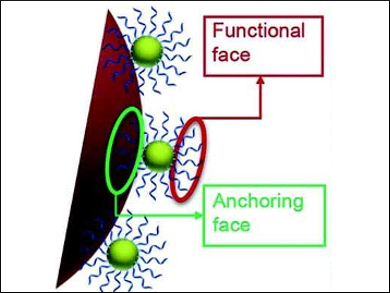A great deal of knowledge has been accumulated over the past two decades on DNA-functionalized gold nanoparticles. However, it remains a challenge to covalently functionalize many other surfaces, such as metal oxides, transition-metal dichalcogenides, and metal-organic frameworks with DNA.
Jeuwen Liu and colleagues, University of Waterloo, Canada, solved this problem by loading DNA onto gold nanoparticles and then attaching the particles to a variety of materials. A high density of DNA can be loaded on gold nanoparticles, resulting in hybrid spherical nucleic acids (SNAs). Mixing the SNAs with a range of materials, e.g., Fe3O4, TiO2, CoO, and Ag nanoparticles, graphene oxide, the metal-organic framework ZIF‐8, or carbon nanotubes, results in highly stable conjugates (pictured). The stability is caused by the fact that DNA can interact with many different types of surfaces through a range of interactions, including π–π stacking, hydrogen bonding, van der Waals forces, electrostatic interactions, and metal coordination.
The resulting materials are functional because the DNA on the side of the SNAs that is not attached to the surface is available for hybridization. The work broadens the scope of DNA-functionalized materials and could allow for new applications, e.g., in biosensor development, drug delivery, and directed materials assembly.
- Polyvalent Spherical Nucleic Acids for Universal Display of Functional DNA with Ultrahigh Stability,
Biwu Liu, Zhicheng Huang, Juewen Liu,
Angew. Chem. Int. Ed. 2018.
https://doi.org/10.1002/anie.201805532




![Synthesis of [c2]Daisy Chains via Mechanochemistry](https://www.chemistryviews.org/wp-content/uploads/2025/04/202504_RotaxanesWithSolidStateMechanochemistry-125x94.png)